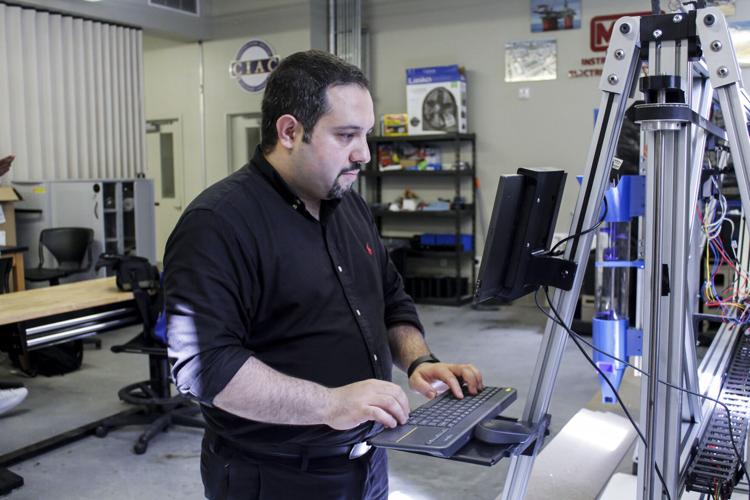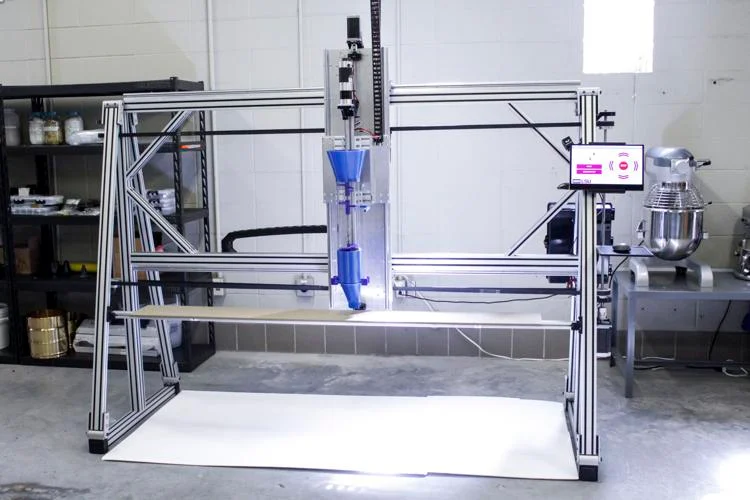With the return to the Moon on the horizon, Louisiana State University (LSU) and NASA are joining forces in a new project that aims to use lunar materials for robotic construction. In 2025, NASA’s Artemis 3 mission will mark humanity’s first return to the lunar surface since December 1972 to establish a long-term presence. To achieve this ambitious objective, LSU’s Assistant Professor and 3D printed construction expert Ali Kazemian is spearheading a new research initiative in collaboration with NASA investigators Michael Fiske and Jennifer Edmunson. They aim to develop 3D printed waterless concrete using native lunar materials, sulfur, and regolith.
Funded by a $200,198 grant from the National Science Foundation (NSF), the LSU and NASA project titled “Planetary Robotic Construction on the Moon and Mars Using 3D Printed Waterless Concrete” stands out thanks to its multifaceted approach. It will begin on January 1, 2024, and is estimated to end on December 31, 2025.
Lunar team up
While space exploration has seen various endeavors to leverage extraterrestrial materials for construction, this initiative sets itself apart in several ways. First and foremost, the project focuses on developing sulfur-regolith concrete (SRC), where molten sulfur serves as the binder, and lunar regolith, the native lunar soil, acts as the filler material. According to the researchers, this combination offers properties ideally suited for space construction, including superior mechanical strength, rapid hardening, and resilience in acidic and saline environments.
“Robotic construction on the Moon using Lunar resources and large-scale 3D-printing technology is the goal. Even shipping raw materials from Earth is cost-prohibitive, so the only practical approach is to use the resources which are already available on the Moon and Mars for construction,” remarks Kazemian. “That is why 3D printing using sulfur-regolith concrete (SRC) is attractive. On the other hand, production of Portland cement concrete, the most commonly used construction material on Earth, will be complicated on the Moon and will require large amounts of water that could otherwise be used for life support or other exploration activities.”
A standout feature of the LSU-NASA collaboration is its unwavering commitment to resource utilization. Recognizing the high-priced nature of transporting materials from Earth, the project advocates the idea of leveraging materials readily available on the Moon and Mars. This aligns perfectly with the sustainability goals of future space exploration, in-situ resource utilization (ISRU) and could pave the way for self-sufficient lunar habitats and structures.
Mission ahead
Furthermore, this initiative thrives on interdisciplinary collaboration. It brings together the expertise of LSU and NASA Marshall Space Flight Center, creating a dynamic synergy between academic research and practical space applications. This collaboration could accelerate the development of innovative construction technologies while ensuring that the research remains grounded in the realities of space exploration.
However, what truly sets this project apart from others aiming to leverage local resources and 3D printing in space is its rigorous space resilience testing. While other endeavors may focus primarily on material development, the LSU-NASA project plans to conduct comprehensive testing of 3D printed SRC specimens under simulated planetary conditions. This includes subjecting the materials to extreme temperature swings, near-vacuum conditions, and even simulated micrometeorite impacts. By addressing these critical knowledge gaps, the project plans to advance our understanding of how these materials perform in the challenging environments of the Moon and Mars.
In addition to its research focus, the LSU-NASA project places a strong emphasis on education. It provides a valuable platform for graduate, undergraduate, and high school students to use cutting-edge construction technologies. By inspiring and training the next generation of engineers and scientists, this initiative contributes to building the workforce needed for the future of space exploration.
Innovation Central
Ali Kazemian’s lab, better known as the rəcast Lab within the Bert S. Turner Department of Construction Management at LSU, is at the forefront of pioneering research in construction 3D printing. The lab’s primary focus is on developing construction technologies that have the potential to reshape how we build structures both on Earth and in space. With a commitment to cutting-edge solutions, the rəcast Lab is at the intersection of engineering, construction, and space exploration.
Other standout projects in the rəcast Lab’s portfolio is the “ISRU-based Planetary Construction 3D Printing for Lunar and Martian Infrastructure Development” initiative, funded by the Louisiana Board of Regents. It spans from 2022 to 2025 and shares a common goal with the LSU-NASA collaboration: leveraging in-situ resources for construction. Another project, “Towards Sustainable Robotic Construction: Concrete 3D Printing with Quarry By-products and Low Portland Cement Content,” was funded by the Louisiana Board of Regents from 2023 to 2026. Sustainability takes center stage in this endeavor, where the rəcast Lab explores the use of quarry by-products and low Portland cement content for 3D concrete printing. By reducing the environmental footprint of construction, this project addresses critical challenges related to resource utilization and sustainability in both terrestrial and extraterrestrial contexts.
Exploration portfolio
Ali Kazemian’s lab continues to push the boundaries of what’s possible in the realm of construction and 3D printing. “We are currently working on several other projects as well, which are focused on using construction 3D printing to build houses and shelters cheaper and faster, to alleviate the global housing shortage crisis and for disaster relief applications,” explains the expert.
This project stands out as a pioneering endeavor in advancing construction technologies for extraterrestrial exploration through the development of sulfur-regolith concrete, a commitment to resource utilization, interdisciplinary collaboration, rigorous space resilience testing, and a focus on education. As humanity prepares to return to the Moon, these innovative approaches may hold the key to sustainable lunar and Martian habitats, furthering our understanding of our solar system and the potential for valuable resources beyond Earth.
Subscribe to Our Email Newsletter
Stay up-to-date on all the latest news from the 3D printing industry and receive information and offers from third party vendors.
You May Also Like
Gorilla Sports GE’s First 3D Printed Titanium Cast
How do you help a gorilla with a broken arm? Sounds like the start of a bad joke a zookeeper might tell, but it’s an actual dilemma recently faced by...
Nylon 3D Printed Parts Made More Functional with Coatings & Colors
Parts 3D printed from polyamide (PA, Nylon) 12 using powder bed fusion (PBF) are a mainstay in the additive manufacturing (AM) industry. While post-finishing processes have improved the porosity of...
$25M to Back Sintavia’s Largest Expansion of Metal 3D Printing Capacity Since 2019
Sintavia, the digital manufacturing company specializing in mission-critical parts for strategic sectors, announced a $25 million investment to increase its production capacity, the largest expansion to its operations since 2019....
Velo3D Initiates Public Offering in a Bid to Strengthen Financial Foundations and Drive Future Growth
Velo3D (NYSE: VLD) has been among a number of publicly traded 3D printing firms that have attempted to weather the current macroeconomic climate. After posting a challenging financial report for 2023,...

































